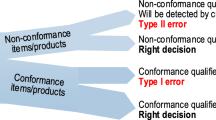Abstract
Over the last three decades, process control in aluminum smelters has improved significantly as it is the biggest leverage for cost and energy reduction in production and product quality improvement, as well as for meeting environmental compliance. The implementation of computerized automatic control systems two decades ago was a step change in improvement in the state of the art of process control. However, the complex and dynamic nature of the process requires human monitoring, diagnosis, and intervention from time to time. This study investigates the use of the supervisory screen of the control system of a smelter, as well as the effectiveness of visual guidelines to help the operators to identify process abnormalities. The results show that visual guidelines such as voltage patterns which are used as a reference improve the performance of the operators. Detection time and falsealarm rates were reduced in addition to increasing detection sensitivities. It is proposed that a higher level of human and system interaction would improve the overall performance process control.
Similar content being viewed by others
References
G.P. Bearne, JOM, 51(5) (1999), pp. 16–22.
D.J. Simons, Trends in Cognitive Sciences, 4(3) (2000), pp. 147–155.
Steven B. Most, Daniel J. Simons, Brian J. Scholl, Rachel Jimenez, Erin Clifford, and Christopher F. Chabris, Psychological Science, 12(1) (2001), pp. 9–17.
J.A. Swets, Psychological Bulletin, 99(2) (1986), pp. 181–198.
J.A. Swets, Science, 240(4857) (1988), p. 1285.
J.A. Swets, David J. Getty, Ronald M. Pickett, and David Gonthier, J. Experimental Psychology: Applied, 1(1), pp. 19–33.
H. Abdi, Encyclopedia of Measurement and Statistics (Thousand Oaks, CA: Sage Publications, Inc., 2007).
N.A. Macmillan and C.D. Greelman, Detection Theory—A User’s Guide (Mahwah, NJ: Lawrence Erlbaum Associates, Inc., Publishers, 2008).
C.D. Wickens, Engineering Psychology and Human Performance (New York: HarperCollins Publishers, 1992).
C.D. Wickens, S.E. Gordon, and Y. Liu, An Introduction to Human Factors Engineering (Upper Saddle River, NJ: Addison-Wesley Educational Publisher Inc., 1998).
J.St.B.T. Evans, British Journal of Psychology, 75(4) (1984), p. 451.
D. Hardman and C. Harries, The Psychologist, 15 Pt. II (February 2002), pp. 76–79.
J.K. Doyle, System Dynamics Review, 13 (1997), pp. 253–266.
D. Kahneman, “Maps of Bounded Rationality: A Perspective on Intuitive Judgment and Choice,” Nobel Prize Lecture, 8 (December 2002), pp. 449–489.
A. Dijksterhuis, M.W. Bos, L.F. Nordgren, and R.B. van Baaren, Science, 311(5763) (February 2006), pp. 1005–1007.
A. Tversky and D. Kahneman, Science, 185 (1974), pp. 1124–1131.
B. De Martino, D. Kumaran, B Seymour, and R.J. Dolan, Science, 313 (2006), pp. 684–687.
R. Lipshitz and O. Strauss, Organisational Behavior and Human Decision Processes, 69(2) (1997), pp. 149–163.
G. Klein, The Power of Intuition—How to Use Your Gut Feelings to Make Better Decisions at Work (New York: Doubleday, a Division of Random House, Inc., 2003).
D. Kahneman, P. Slovic, and A. Tversky, Judgement under Uncertainty: Heuristics and Biases (Cambridge/New York: Cambridge University Press, 1982).
M.P. Taylor and J.J.J. Chen, Materials and Manufacturing Processes, 22(7) (2007), pp. 947–957.
D.J. Simons and C.F. Chabris, Perception, 28 (1999), pp. 1059–1074.
S.B. Most, D.J. Simons, B.J. Scholl, and C.F. Chabris, Psyche, 6(14) (2001), pp. 6–11..
E. Balcetis and D. Dunning, J. Personality and Social Psychology, 91(4) (2006), pp. 612–625.
Y. Gao, M.P. Taylor, J.J.J. Chen, and M.J. Hautus, Light Metals 2011, ed. Stephen J. Lindsay (Warrendale, PA: TMS, 2011), pp. 605–609.
Author information
Authors and Affiliations
Corresponding author
Rights and permissions
About this article
Cite this article
Gao, Y., Taylor, M.P., Chen, J.J.J. et al. How to avoid the ‘invisible gorilla’ in aluminum smelting process control: Visual guidelines. JOM 63, 120–126 (2011). https://doi.org/10.1007/s11837-011-0124-0
Published:
Issue Date:
DOI: https://doi.org/10.1007/s11837-011-0124-0




